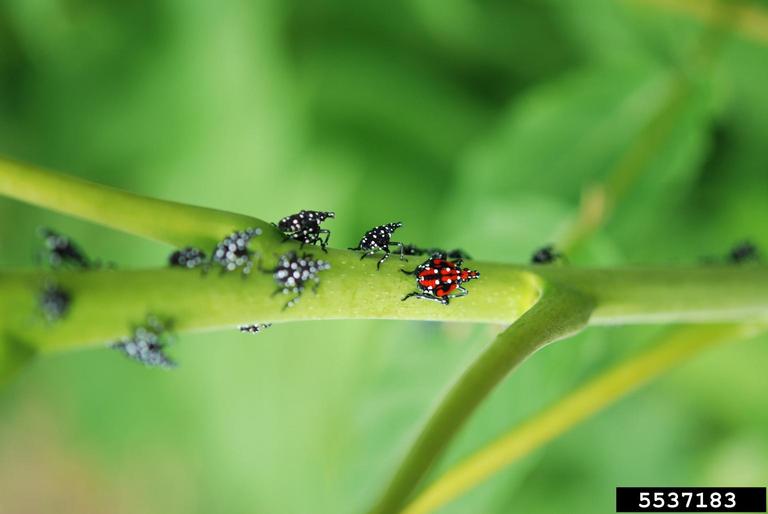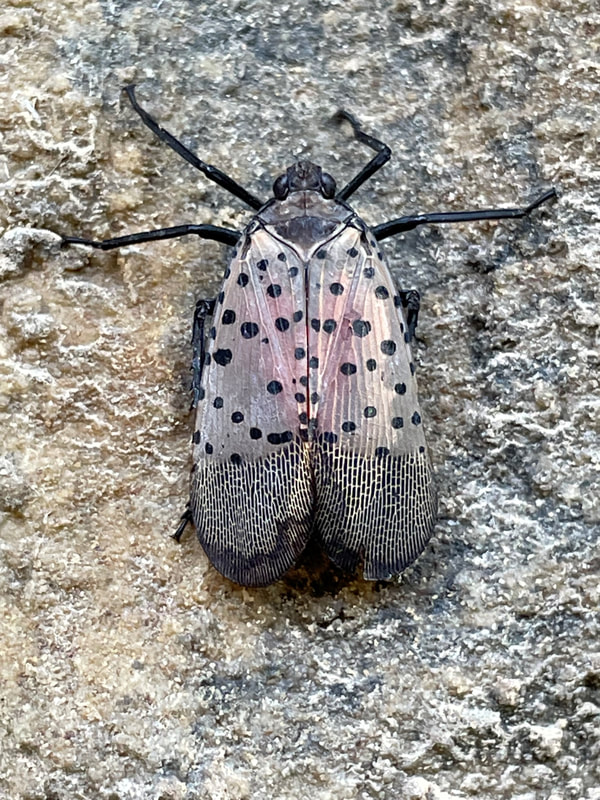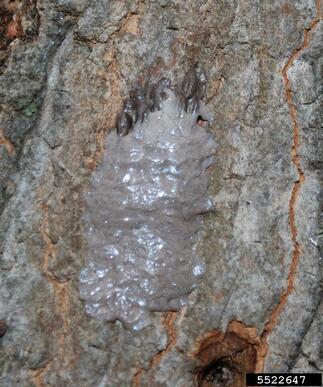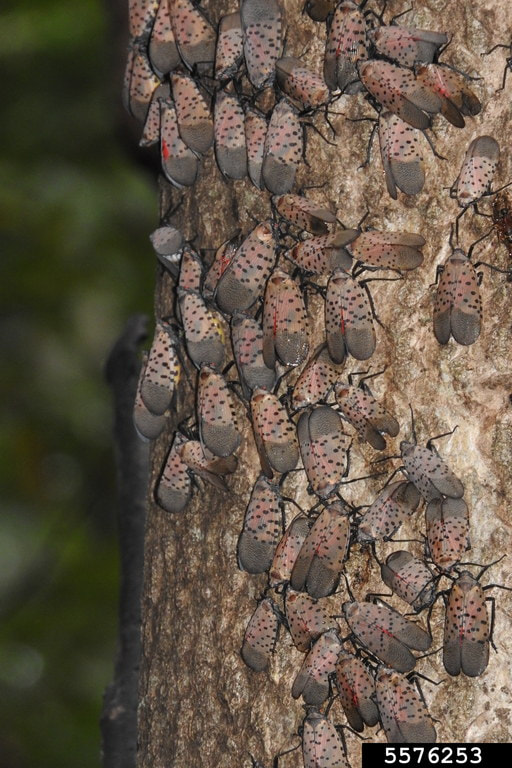|
We have been hearing about not moving firewood and to check materials being moved from one place to another for potential invasive insect hitchhikers for a long time. Staying vigilant about doing so is a must as invasive insects are prevalent around the State of Ohio. One such insect that we should all be aware of is the spotted lanternfly (SLF). SLF, a plant hopper, is a native insect to China, India, and Vietnam. SLF was first detected in eastern Pennsylvania in 2014 and has been detected in many eastern States from New Hampshire to North Carolina as well as Michigan, and Indiana. Ohio populations were found in Cuyahoga, Lorrain and Jefferson Counties in 2021 and late last year SLF was confirmed in Hamilton County (Ohio Department of Agriculture. Facebook, 13 Oct. 2022, https://www.facebook.com/OhioDeptofAg/.). According to the United States Department of Agriculture (USDA), “adult spotted lanternflies are about 1 inch long and one-half inch wide, and they have large and visually striking wings. Their forewings are light brown with black spots at the front and a speckled band at the rear. Their hind wings are scarlet with black spots at the front and white and black bars at the rear. Their abdomen is yellow with black bars. Nymphs in their early stages of development appear black with white spots and turn to a red phase before becoming adults. Egg masses are yellowish-brown in color, and most are covered with a gray, waxy coating prior to hatching.” The primary host of SLF is the tree of heaven (Ailanthus altissima). Tree of heaven is a rapidly growing deciduous tree native to China that is now spread across North America. It is a problem as well because it spreads quickly and aggressively by producing enormous amounts of seed (approximately 300,000 annually) and it secrets a chemical into the soil that is toxic to surrounding plants. While finding an invasive insect that eats an invasive tree sounds like good news, it is not. Unfortunately, SLF also likes to dine on other plants and trees including grape, hop, apple, stone fruit, maple, poplar, pine walnut, sycamore, and willow. SLF lays eggs on smooth host plant surfaces and on non-host material, such as bricks, stones, outdoor furniture, playground equipment, firewood, etc. Eggs hatch in the spring and early summer, and nymphs begin feeding on a wide range of host plants by sucking sap from young stems and branches. Adults appear in late July and start to feed. As the adults feed, they excrete a sticky sugary substance called honeydew. The fluid builds-up on plants and on the ground underneath infested plants, causing sooty mold to form. The feeding weakens the plant, reducing photosynthesis, and eventually can lead to killing the plant. SLF can fly short distances, walk, and jump, but its long-distance movement is helped by humans thru moving infested materials. According to Ohio Department of Agriculture (ODA), “on October 28th, 2021, the ODA announced a quarantine to combat the spread of the spotted lanternfly. SLF is now designated a destructive plant pest under Ohio law, which increases inspections and restricts movement of certain items from infested counties in Ohio and other states into non-infested Ohio counties.”
If you suspect that you have found SLF, please call or email the Plant Pest Control Section of the Ohio Department of Agriculture: (614) 728-6400 or [email protected]. or report via the EDDMapS Great Lakes Early Detection Network mobile app. For more information regarding SLF, Warren County Soil and Water Conservation District programs, and/or technical assistance on water or soil questions, visit http://warrenswcd.com or call 513-695-1337. Additional Resources: Ohio Department of Agriculture - https://agri.ohio.gov/divisions/plant-health/invasive-pests/slf USDA Animal and Plant Health Inspection Service - https://agri.ohio.gov/divisions/plant-health/invasive-pests/slf New York State Integrated Pest Management, Cornell University - https://nysipm.cornell.edu/whats-bugging-you/spotted-lanternfly/ Penn State Extension – Tree of Heaven - https://extension.psu.edu/tree-of-heaven
1 Comment
|
Details
Warren County SWCD Staff BlogA blog to keep you informed on all the latest news at Warren County SWCD and in the conservation world. Archives
May 2024
Categories
All
|
|
|
Contact:PHONE: (513) 695 - 1337
EMAIL: [email protected] HOURS: Monday - Friday 7:30am - 4:00pm (except holidays) Connect:Warren County Soil & Water Conservation District Copyright © 2016
Warren SWCD Privacy Notice. Emails are serviced by Constant Contact. Constant Contact's Privacy Notice. |





